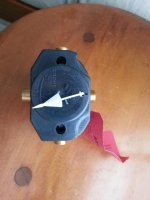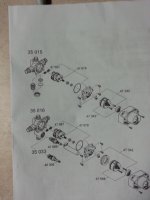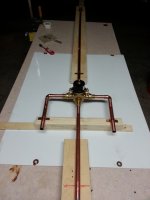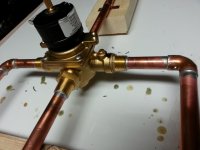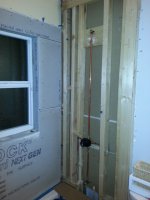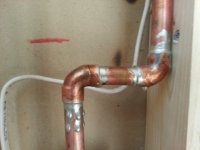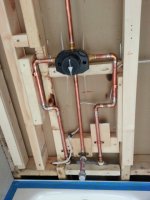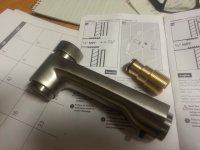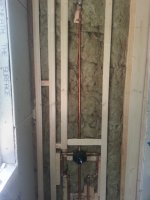Jsmallberries
Member
I purchased a Hansgrohe control valve for my bathroom remodel. Need some help with the rough in body.
I've seen online videos where the 1/2" copper is "sweated" into the rough in, instead of Using NPT or threaded female.
1) Better to use threaded NPT-MIP to connect to the valve than to solder copper to the interior at the rough in valve? Pros and cons
2) Instructions state not necessary to remove cartridge during "normal" soldering. Assume they mean if you are using threaded connections at the port, soldering 1/2" copper to the port would require applying heat to the port, to draw in the solder?
3) There is no mounting flange. Install advice without a mounting flange?
4) The plastic finish wall template directions state, "the finished wall must be within the dimensions shown on the template? there is app a 1" range . Is it better to have it flush with the finished wall or slightly proud or slightly recessed?
5) Once installed and pressure tested is there an internal water shut off besides the control knob
Any other advice greatly appreciated
I've seen online videos where the 1/2" copper is "sweated" into the rough in, instead of Using NPT or threaded female.
1) Better to use threaded NPT-MIP to connect to the valve than to solder copper to the interior at the rough in valve? Pros and cons
2) Instructions state not necessary to remove cartridge during "normal" soldering. Assume they mean if you are using threaded connections at the port, soldering 1/2" copper to the port would require applying heat to the port, to draw in the solder?
3) There is no mounting flange. Install advice without a mounting flange?
4) The plastic finish wall template directions state, "the finished wall must be within the dimensions shown on the template? there is app a 1" range . Is it better to have it flush with the finished wall or slightly proud or slightly recessed?
5) Once installed and pressure tested is there an internal water shut off besides the control knob
Any other advice greatly appreciated

